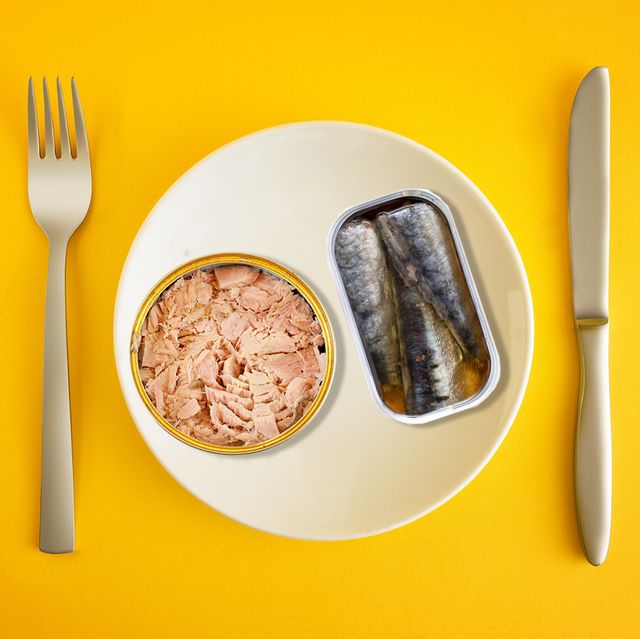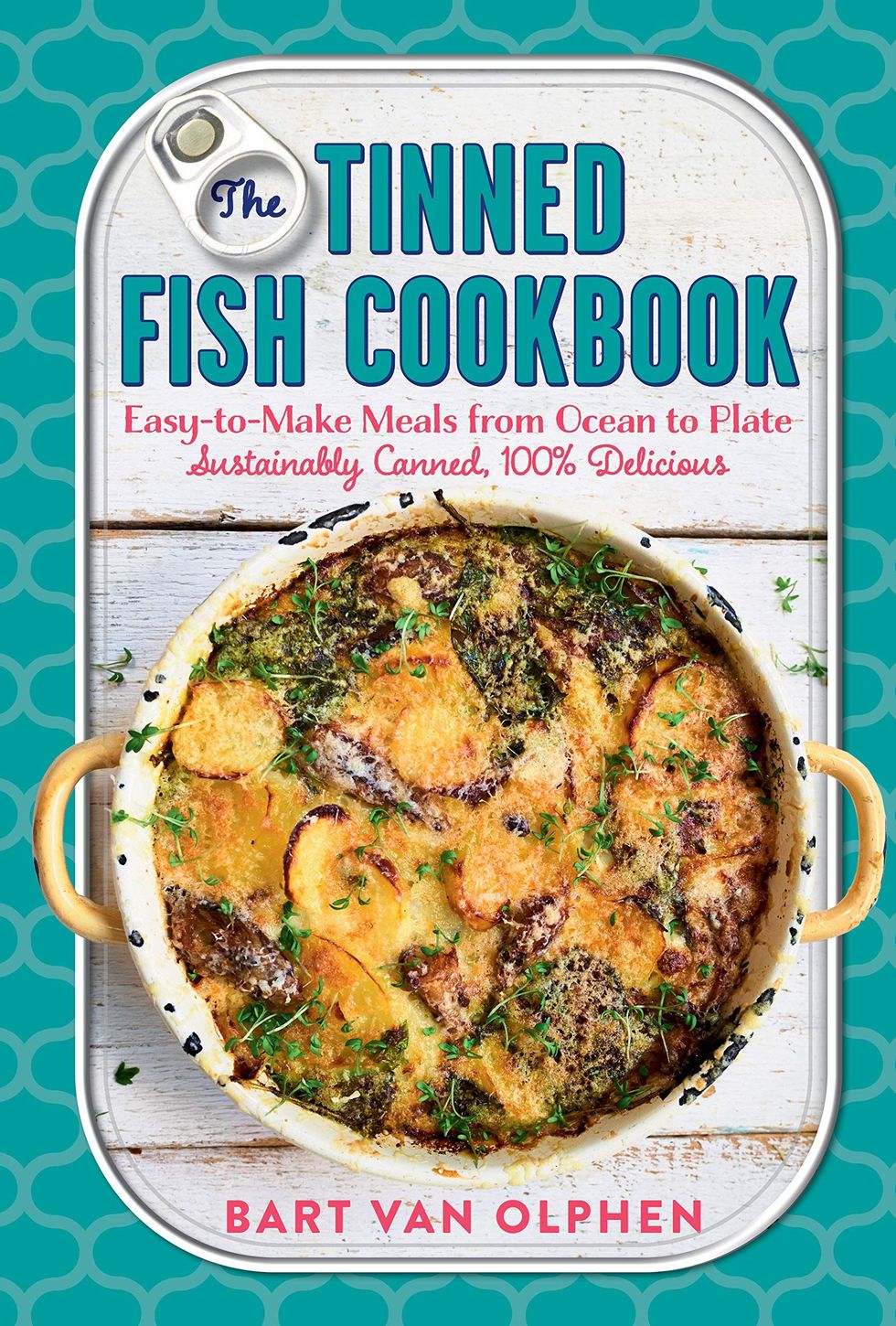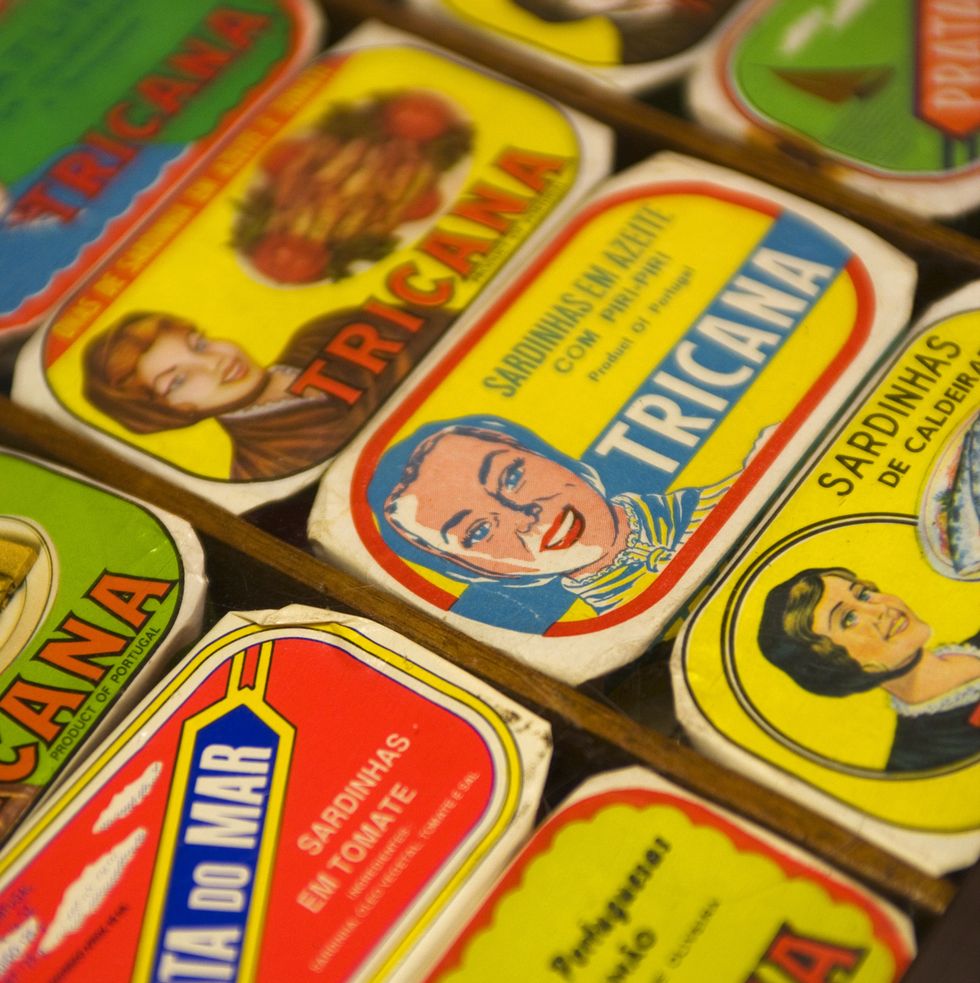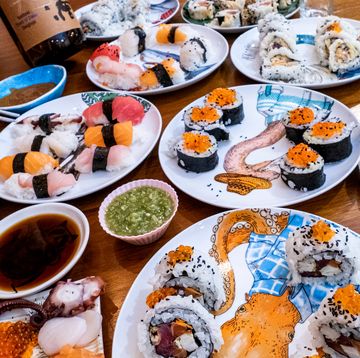If you had suggested to me, at the beginning of the year, that there would be serious sales potential in a weird little book full of recipes involving canned tuna, herring, and mackerel, I would have laughed and directed you to the pile of forgotten cookbooks in my basement.
But now it’s the middle of March, and a lot of us are stuck in our homes. We can, as of this moment, safely venture out and buy fresh seafood, sure, but some primitive impulse to hoard means that many of us appear to have quarantine-ready stockpiles of tinned fish in our pantries... just in case.
In that sense, we’re all living like freelance food writers. Sardines on toast = a common midday repast for those of us in the typing-words-at-home trade. Such is my fondness for conservas (as they’re known on the Iberian Peninsula) that when my wife and I traveled to Portugal in 2017, I spent hours in tinned-fish shops gazing in wonder at the beautifully packaged wares. We even have a poster of Portuguese sardines hanging in our kitchen.
But I’m willing to bet that a lot of Americans don’t really know what to do with all those cans of sardines and mackerel, and maybe they’re even a little wary of the maritime stink within. Really, how much mayo-drowned tuna salad can anyone eat? So along comes that weird little book. It’s called The Tinned Fish Cookbook, and it’s not scheduled to be released until early May, but already I have found myself drawn to the recipes inside the advance copy on my desk (one of the perks of being a food writer). I’m not sure I understand the appeal of sardine hummus, which is one of the dishes inside, but mackerel asparagus salad with sesame vinaigrette, and artichoke and anchovy dip, and potato and herring salad, and that old reliable, pasta puttanesca? In these bunkered weeks, all of these recipes sound like delicious ways to raid the pantry.
The book comes from Bart van Olphen, a Dutch entrepreneur and advocate for sustainable fishing. His got hooked on canned fish during trips to those countries that revere it. “It always fascinated me when I was having my holidays in Spain or Portugal, where I found these amazing designed cans and very tasteful products,” he says. “It was around six years ago I visited Brittany in France. I was visiting a factory de ‘conserves’ in Olonne-sur-Mer, where I met a lady named Marie Bevillon. She gave me a present to take home: a beautiful can of sardines. Just before I left she told me to make sure to turn the can every few months—and that I shouldn’t eat the sardines within the first year. I was surprised, and it made me think. In my country, at that time, canned seafood was mostly seen as a secondary product.”
That epiphany led van Olphen to take a deeper dive into the realm of high-quality tinned fish, learning about which certifications to look for (he’s into pole-and-line-caught tuna and the stamp that says MSC, for a nonprofit called the Marine Stewardship Council) and which preparations make the best use of that oily goodness (he likes a tuna dish from the Maldives called mas huni, which we’ll get to in a second).
Van Olphen came to realize that he could do a lot more than simply eat the fish straight out of a tin—not that there’s anything wrong with that. From a cooking standpoint, the upside to tinned seafood is just sitting there: The fish is already cooked. You don’t have to worry about prepping it, which means you can instead weave the fish into a recipe as a forceful and healthful flavor component. “Canned seafood is ideal for this new way of cooking,” van Olphen says. Balance the flavor and texture of the anchovies or mackerel or sardines with some crunch or pop (such as the sesame seeds in that aforementioned vinaigrette), some citrus acidity, some fresh herbs, and some carbs, and you’re likely to come up with a dinner that makes smart use of the pantry stockpile and doesn’t leave you bored.
Which brings us back to mas huni. If we can’t travel to the Maldives right now, at least we can pretend. “When visiting the Maldives you’ll find this dish for breakfast, lunch, and even dinner,” van Olphen says. “It’s so good! Simply chop one onion and finely chop a chili—remove the seeds first. Then squeeze all this with your hand—use a plastic glove—together with the juice of one lime and some salt. Locally they tell you to massage the ingredients. Now add a can of drained tuna and the same amount, in volume, of grated coconut. In the Maldives they use freshly chopped curry leaves, but if you can’t find those, mix in some finely chopped cilantro. Serve it on toast or pita bread.”
So don’t worry about over-filling your pantry with tuna. What you really need is a coconut.














